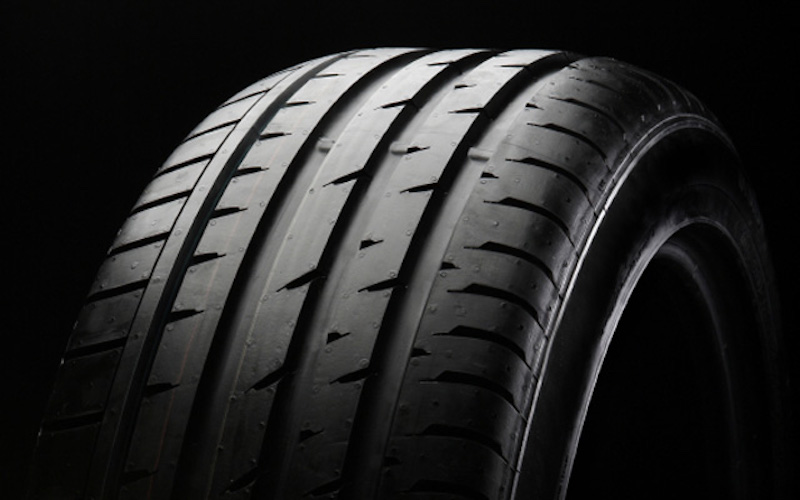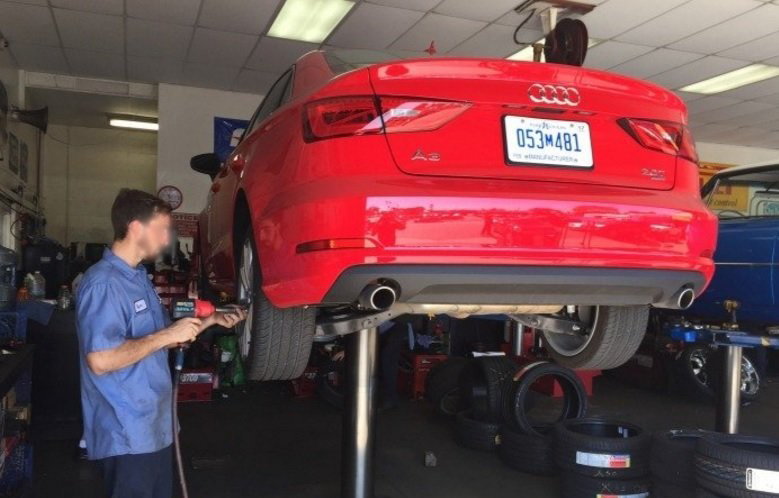How long do Audi A3 tyres last? You’ve probably never driven a car with smooth rides, precise handling, and confidence. How can I maintain the performance of my tyres?
The lifespan of Audi A3 tires is determined by a variety of factors, including road conditions, maintenance routines, and driving habits. The goal of this guide is to shed light on the elements, as well as provide insights on how to prolong the life of your tires and when they should be replaced.
Discover the essential signs of wear, how to maintain your Audi A3 tyres to make informed decisions about their lifespan, and what replacement options are available to improve the performance and environmental impact of your Audi A3.
Understanding Tyre Longevity

When it comes to comprehending the longevity of Audi A3 tyres, a multifaceted exploration becomes imperative. Understanding the intricacies behind the lifespan of these critical vehicular components requires a closer look at several pivotal aspects.
Factors Affecting Tyre Lifespan
Road Conditions:
The terrain traversed plays a significant role in dictating tyre longevity. Harsh road conditions laden with potholes, rough surfaces, or sharp debris tend to accelerate tyre wear, impacting both tread integrity and overall performance.
Driving Habits:
Human behavior behind the wheel directly influences tyre durability. Aggressive driving styles characterized by sudden braking, sharp turns, and excessive acceleration contribute to faster wear and tear, significantly reducing the lifespan of Audi A3 tyres.
Tyre Maintenance:
Prudent maintenance practices serve as a cornerstone for extending tyre life. Regular checks for proper inflation, routine rotations, and diligent inspections for signs of wear or damage are instrumental in preserving tyre integrity.
Tyre Quality:
The intrinsic quality of tyres significantly determines their longevity. Opting for high-quality tyres engineered with durable materials and advanced technology tends to offer prolonged service life compared to subpar alternatives.
Manufacturer Specifications
Audi’s Recommendations:
Adhering to manufacturer-recommended guidelines for tyre care and maintenance ensures optimal performance and longevity. These recommendations encompass tyre pressure, rotation intervals, and specific maintenance routines tailored for Audi A3 models.
Tyre Warranty Details:
Understanding the warranty terms associated with Audi A3 tyres provides valuable insights into coverage for potential premature wear, defects, or other issues. This knowledge aids in leveraging warranty benefits for maximizing tyre lifespan.
In essence, the lifespan of Audi A3 tyres is a confluence of external factors, driving behaviors, meticulous maintenance, and the inherent quality of the tyres themselves. By grasping these interconnected elements, car owners can navigate their journey while enhancing the endurance and performance of their Audi A3 tyres, ensuring a safer and more efficient driving experience.
Signs of Tyre Wear
Understanding the signs of tyre wear stands as a pivotal aspect of responsible car ownership, ensuring not only safety but also cost-effectiveness in vehicle maintenance. These indicators serve as key warnings, prompting necessary action to maintain optimal tyre condition and road safety.
A. Tread Depth and its Importance
Tread depth acts as an initial marker of tyre wear. A tyre’s tread depth directly correlates to its ability to grip the road surface. As tyres wear down, their tread depth diminishes, impacting traction, especially in adverse weather conditions. Regularly checking tread depth becomes imperative to gauge tyre health and make informed decisions regarding replacements.
B. Visual and Physical Indicators of Wear
-
Tread Wear Indicators:
Manufacturers often embed tread wear indicators in the tyre grooves. These indicators appear as raised bars or depressions within the tread pattern. When the tread wears down to the level of these indicators, it signifies that the tyre has reached its minimum usable depth and necessitates replacement. -
Uneven Wear Patterns:
Irregular wear across the tyre surface indicates underlying issues. Overinflation, underinflation, misaligned wheels, or suspension problems often manifest as uneven wear patterns. Identifying and addressing these issues promptly can prevent further damage and elongate tyre lifespan. -
Bulges or Cracks:
Visually inspecting tyres for bulges, cracks, or blisters along the sidewalls or tread indicates potential structural weaknesses. These anomalies could stem from impacts, potholes, or age-related deterioration, posing safety risks and warranting immediate attention or replacement.
Identifying the subtleties within these signs of tyre wear empowers drivers to proactively address potential issues, enhancing road safety and optimizing vehicle performance. Regular inspections and attentive maintenance serve as the linchpins in extending the life of tyres, ensuring a safer and more economical journey on the roads.
Maximizing Tyre Longevity
Maximizing the longevity of your vehicle’s tyres goes beyond mere upkeep—it involves a blend of astute maintenance practices and mindful driving habits. By focusing on proactive measures and informed decisions, you can significantly extend the lifespan of your tyres, ensuring safer travels and cost-effectiveness in the long run.
A. Regular Maintenance Practices
-
Proper Inflation and Rotation:
Maintaining recommended tyre pressure levels and adhering to routine rotations at specified intervals help distribute wear evenly across all tyres, maximizing their lifespan. -
Wheel Alignment and Balancing:
Periodic checks and adjustments for wheel alignment and balancing prevent irregular tyre wear, preserving their integrity and promoting longevity. -
Routine Inspections:
Regular visual checks for signs of wear, damage, or abnormalities—such as tread wear indicators, cracks, bulges, or uneven wear patterns—enable timely interventions and prevent potential hazards.
B. Driving Tips for Prolonging Tyre Life
-
Smooth Driving Practices:
Adopting a gentle driving approach, including gradual acceleration and deceleration, minimizes unnecessary strain on tyres, reducing wear and tear. -
Avoiding Harsh Braking and Acceleration:
Sudden braking and rapid acceleration exert excessive force on tyres, accelerating tread wear. Practicing smooth transitions between speeds preserves tyre integrity. -
Handling Potholes and Rough Roads:
Vigilance while navigating uneven surfaces, potholes, or rough roads prevents potential damage to tyres, preserving their structural integrity and longevity.
By integrating these practices into your vehicle maintenance routine and driving behavior, you actively contribute to prolonging the life of your tyres. Regularity and attentiveness in maintenance coupled with mindful driving habits serve as the cornerstone for maximizing tyre longevity, ensuring a safer and more economical journey on the road ahead.
Expected Tyre Lifespan for Audi A3

The expected lifespan of tyres on an Audi A3 can vary significantly based on diverse factors, ranging from industry standards to real-life experiences of owners. Understanding these variables is essential for car owners to manage expectations and optimize tyre longevity.
A. Industry Standards vs. Real-Life Expectations
Industry standards often suggest an estimated mileage for tyre replacements, typically ranging from 25,000 to 50,000 miles for standard all-season tyres. However, these figures serve as benchmarks and might not precisely reflect real-world scenarios due to variations in driving habits, road conditions, and maintenance routines. Factors such as aggressive driving, frequent short-distance trips, or neglecting regular maintenance can considerably shorten tyre lifespan, while conscientious care and cautious driving can extend it beyond standard estimates.
B. Owner Experiences and Testimonials
Real-life experiences from Audi A3 owners provide valuable insights into actual tyre longevity. Testimonials often highlight diverse driving conditions and habits, offering a more nuanced perspective than industry standards alone. Owners’ experiences may reveal instances where tyres exceeded or fell short of expected lifespans, providing practical insights for fellow Audi drivers.
C. Common Replacement Mileage
While there’s no one-size-fits-all answer to the expected tyre lifespan for an Audi A3, common replacement mileage often aligns with industry standards. However, this can significantly vary based on individual driving behaviors, road conditions, tyre maintenance, and even regional climate differences.
In essence, determining the expected tyre lifespan for an Audi A3 necessitates a nuanced approach, considering both industry standards and real-life experiences. By amalgamating these insights and tailoring them to individual driving habits and maintenance routines, Audi A3 owners can effectively manage tyre expectations, optimize longevity, and ensure safe and efficient travels on the road.
Cost Considerations and Replacement Options
When contemplating tyre replacement for an Audi A3, several pivotal considerations influence both cost and performance. These factors range from budgeting for replacement to deciding between Original Equipment Manufacturer (OEM) and aftermarket tyres, along with selecting the right type tailored to the car’s needs.
A. Budgeting for Tyre Replacement
Planning for tyre replacement involves understanding the associated costs. Factors influencing pricing include tyre size, brand, tread pattern, and intended use (e.g., all-season or specialized). It’s essential to allocate a realistic budget that accounts not only for the tyres themselves but also potential additional expenses like installation, alignment, and disposal of old tyres.
B. OEM vs. Aftermarket Tyres
Choosing between OEM and aftermarket tyres presents a significant decision. OEM tyres, crafted specifically for Audi vehicles, often prioritize compatibility and original specifications but might come at a higher price point. On the contrary, aftermarket options offer a broader selection, potentially lower prices, and sometimes different performance attributes. Weighing the trade-offs between brand loyalty, cost, and performance is crucial.
C. Choosing the Right Tyres for Audi A3
-
Performance vs. Longevity Trade-offs:
Tyres designed for high performance might deliver superior handling and grip but might wear out more quickly. Conversely, tyres optimized for longevity might sacrifice some performance attributes. Assessing personal driving preferences and the intended usage of the vehicle aids in striking the right balance between performance and longevity. -
All-Season vs. Specialized Tyres:
All-season tyres cater to a wide range of conditions, offering versatility across different weather scenarios. Specialized tyres, such as summer or winter variants, excel in specific conditions but might lack adaptability. Deciding on the primary use and the prevailing weather conditions in the driving environment assists in making an informed choice.
Choosing the right tyres for an Audi A3 hinges on a blend of financial considerations, performance requirements, and driving preferences. Balancing these elements ensures a well-informed decision that optimizes both cost-effectiveness and driving experience.
Environmental Impact and Disposal
When delving into the realm of tyre disposal and its environmental impact, a profound understanding of the consequences of improper disposal and the potential for eco-friendly tyre recycling solutions emerges as crucial. The ecological ramifications of tyre misuse or neglect loom large, considering the alarming statistics indicating that nearly 300 million tyres reach the end of their lifecycle in the United States alone, signifying a monumental environmental concern. Tyres, when irresponsibly disposed of, pose significant threats to the ecosystem, serving as breeding grounds for disease-carrying pests like mosquitoes or contributing to hazardous fires, releasing toxic fumes and emissions.
A. Tyre Recycling and Eco-Friendly Disposal Options
Opting for eco-friendly tyre disposal and recycling stands as a pivotal solution to mitigate environmental harm. Recycling avenues, including rubber crumb applications in playgrounds or sports surfaces and shredded rubber utilization in road construction, exemplify innovative approaches that repurpose old tyres. Moreover, exploring sustainable disposal methods like pyrolysis, where tyres are decomposed through heat in an oxygen-starved environment, showcases a potential pathway to harness energy while minimizing environmental impact.
B. Environmental Consequences of Tyre Misuse or Neglect
When tyres are misused or neglected, the environmental repercussions are significant. Improper storage or disposal of tyres in landfills results in excessive space occupation and presents a breeding ground for disease vectors. Furthermore, the decomposition of tyres releases harmful chemicals and heavy metals into the soil and water bodies, contributing to soil contamination and posing risks to aquatic life. Neglecting tyre maintenance, leading to premature wear and tear, accelerates the frequency of disposal, exacerbating the environmental burden.
Understanding the multifaceted dimensions of environmental impact and disposal methods concerning tyres necessitates a concerted effort toward embracing eco-friendly disposal practices and raising awareness about responsible tyre maintenance and disposal strategies. It is imperative to advocate for innovative recycling techniques and the implementation of sustainable approaches to minimize the adverse ecological footprint of tyre disposal while prioritizing environmental preservation and sustainability.
Categories: Luxury Vehicles
